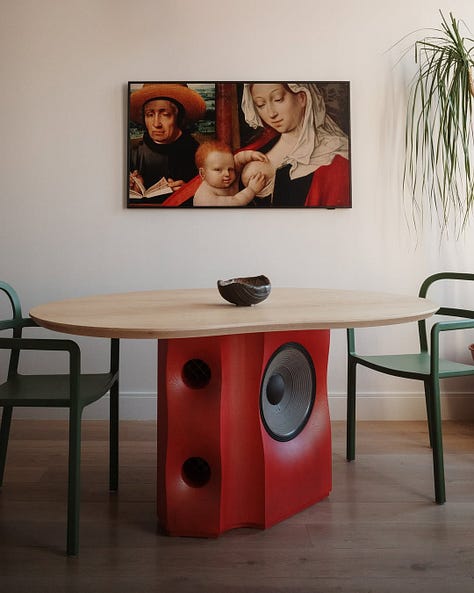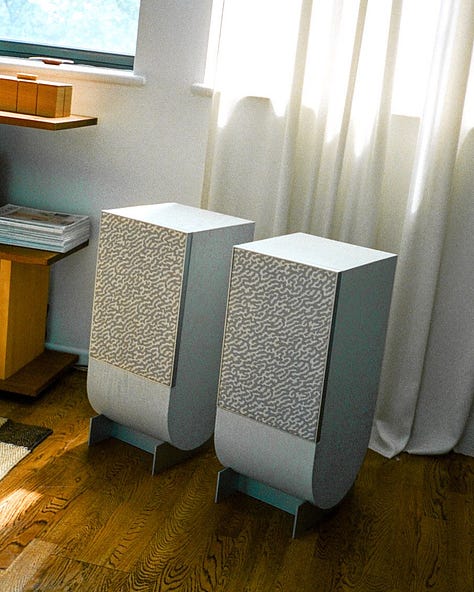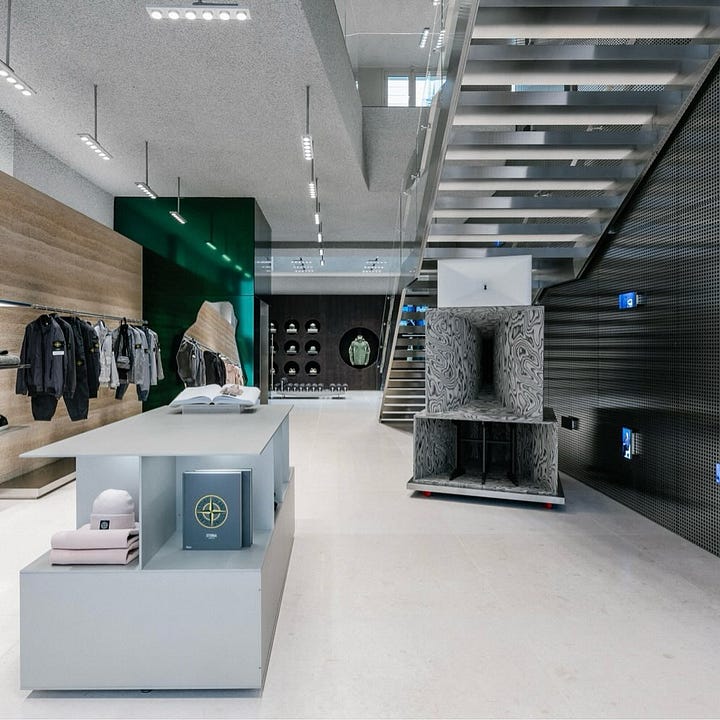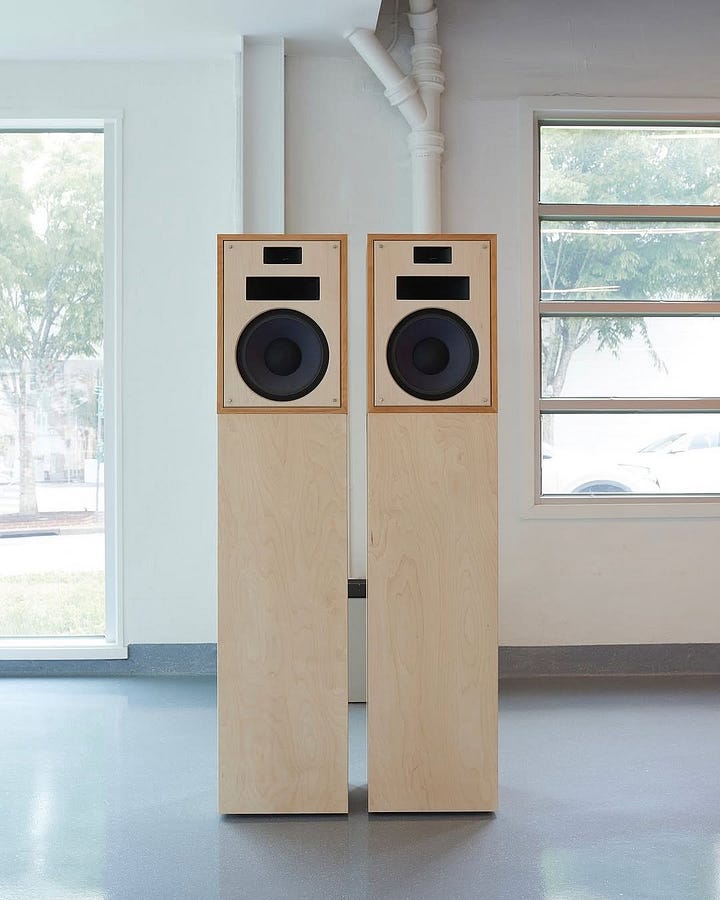LOUD AND CLEAR!
NYC designers are reshaping hi-fi speaker design
This post is a collaboration with Pale Blue Magazine, as a part of a series about emerging hi-fi designers in NYC.





We spent the last few decades shrinking soundwaves down to fit into our pockets. From Walkman to Spotify, we traded fidelity for flexibility. Portability. Personalization. Efficiency. But somewhere in all that compression, we lost something else. What used to be social — listening to a record — is now something we mostly do alone. Noise-cancelled. Algorithm-fed. Avoiding eye contact at all costs.
But something’s shifting again. People are building sound systems. By hand. From the ground up. Big, physical setups that don’t fit in an IKEA tote bag. And with them, something else is re-emerging too: listening as a shared ritual. Sound not just as entertainment, but as communion.
Devon Turnbull helped open this door. Through OJAS, he reframed hi-fi as a creative practice — something that could live embedded in art, fashion and design culture. When he dropped the OJAS DIY Speaker Kit in 2020, it didn’t just invite people to listen better, it invited them to build differently.
That moment collided with a larger shift already underway. COVID forced us home and made us think differently about the spaces we live in. Naturally, the design conversation began to shift: from sneakers to speakers, from what’s on our body to what’s in our room. And what’s followed after is an entirely new conversation carried forward by designers who aren't just building hi-fi speakers, but whole systems of context, character, and care.
Across New York, a wave of designers are reimagining what it means to shape sound. Among them: House Under Magic, Joe Seigle, Mo Yasin, Bridge Street Sound, WAF Audio, and Western Acoustics.
Their systems reflect who they are, where they’re from, and how they listen — designed as much for how they sound as how they look. Some reference Jamaican dub culture, while others ditch the traditional box format in favor of sculptural forms. There’s no single aesthetic, just a shared respect for craft, slowness, and sound you can feel vibrating through your ribcage.
After years of shrinking sound down, this group of designers is letting it breathe again. Less noise, more nuance. That’s the signal. Loud and clear.


